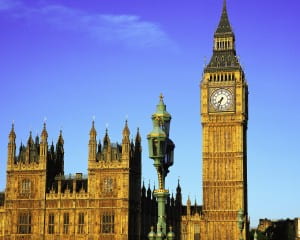Send a message to future UW – Green Bay faculty, staff and students by leaving a message in a bottle during the week of Sept. 17 -21. In October, the new planters being installed on the Student Services Plaza will be filled with soil. But, some of the planters are deeper than the plants will need to live a healthy and long life. So, as many gardeners do when they have a really big pot, we’ll be using a ‘filler’ – bottles that have been recycled on campus – to take up some of that unneeded space. This saves money on soil we don’t have to purchase and reuses bottles already present on campus.
To make the whole process more fun, everyone on campus has the opportunity to build their own time capsule to be used in the planters. With plastic bottles lasting an estimated 450 years in a landfill (that’s why it’s important to recycle them!!), take a few minutes to send your message to a future generation of students and employees. Here’s how you can participate:
Do-it-Yourself
- Save a rigid plastic soda or water bottle and save the cap!
- Wash and dry the bottle – set the rinsed bottle in a sunny place for a day or so to evaporate the leftover water inside
- Write your message – is it a wish, hope, dream, thought, comment, drawing? Include a little demographic info such as your name, age, etc. so future UWGB historians will know something about you
- Place it inside the bottle and put on the cap
- Bring your bottle to campus the week of Sept. 17 – 21 and deposit it in one of the specially marked containers located at-
- MAC Hall – top of the hallway ramp, next to the recycling/trash collection station
- Cofrin Library – collection station closest to the Garden Cafe
- Rose Hall – to the right of the collection station closest to Wood Hall
- Theater Hall – next to the collection station
- Instructional Services – next to the GAC Lab, to the left of the collection station
- Environmental Sciences – just outside of ES114 lecture hall, next to the collection station
Less Do-it-Yourself
- Come to the Message-in-a-Bottle booth staffed by SGA, PEAC and SLO members. Booths and times are:
- Monday, Sept. 17, MAC Hall, top of stairs by the Biodiversity Center; 11:30-1:00
- Tuesday, Sept. 18, Union, across from the bookstore; 11:30 – 1:00
- Friday, Sept. 21, Cofrin Library, across from Garden Cafe; 11:30 – 1:00
- Pick up a bottle (limited quantity available, first-come/first-serve), paper and pen.
- Contemplate and write your message.
- Deposit it in the time capsule bin.
Who knows how valuable your signature or message will be in 40 – 50 years when the roof again needs replacement!











